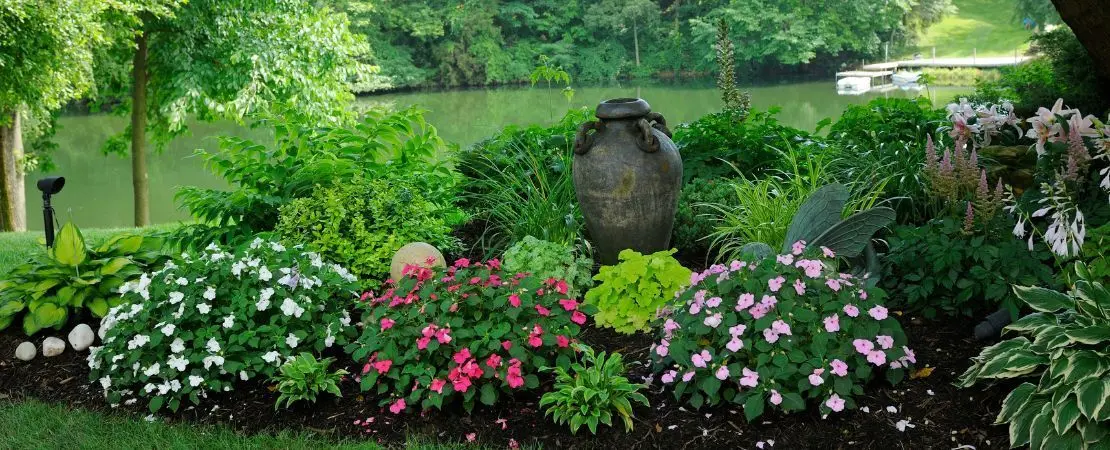August 23, 2024

Where time slows down
Upon entering a shade garden, I make a conscious effort to slow down and take it all in. The stillness of these gardens is mesmerizing, as if time itself has slowed. The plants, always immaculately presented, stand at attention, awaiting visitors.
A shade garden can still be a showstopper, even without grass.
A deep-cut garden bed edge, topped with a layer of mulch, creates a captivating landscape feature.
Don’t let excessive shade cramp your gardening style.
Explore the wonderful world of shade gardening and turn that shaded area into a breathtaking retreat.
Shade gardens are a great option for all gardeners, but they’re especially ideal for busy individuals. Since shad gardens grow at a slower pace, you can easily pick up where you left off, making them a low-maintenance delight.
It has taken me many years to embrace my shady gardens. They are under deciduous trees, so spring is a great time before the leaves come out. Tulips, daffodils, allium and other spring bulbs can bloom into early June, along with early perennials and native plants such as bloodroot, trilliums, lungwort and hellebores.
Once the trees leaf out I rely on a variety of perennials to create interest in my now very shady gardens. Different textures, colours and heights help to create interest, as well as planting in groups of three. Shade loving annuals (begonia, impatiens), perennials (peach-leaved bellflower, masterwort, lamium), and coleus are a few plants that can add colour to the shade garden.
In my gardens the lack of sun is not as big a problem as the fibrous surface roots from my trees. They tend to overtake the roots of my plants, so I often bury plastic pots in my garden to plant my perennials in. I tried lining my planting holes with landscape fabric but the roots went through it.
Some of my favourite shade plants are hellebores, brunnera, Solomon’s seal, hostas, ferns, heucherella, astilbe, and epimedium. And a bonus of shade gardens is they typically grow less weeds!
Input your search keywords and press Enter.